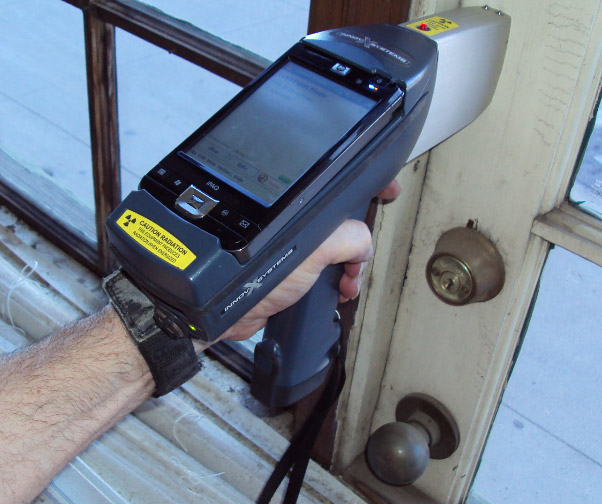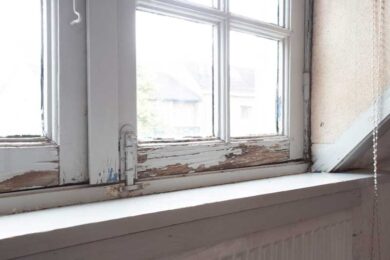DOH & HPD Lead Violation Removal NYC-- Specialist Solutions for Conformity
Step-by-Step Refine for Effective Lead Violation Remediation
Attending to lead offenses requires a thorough and organized strategy to make certain both safety and security and regulatory conformity. The trip starts with the exact discovery and evaluation of contamination sources, using innovative diagnostic devices. Following this, adherence to federal and state policies is vital to developing a reliable removal strategy. Such a strategy must information the specific approaches and timelines for activity. The real remediation requires knowledgeable workers to carry out these strategies while purely adhering to security protocols. What happens after the remediation is completed? The answer hinges on understanding the necessary post-remediation methods that ensure lasting security and area wellness.

Discovery and Evaluation
Discovery and assessment are essential steps in the removal of lead violations. To make sure an effective removal procedure, it is important to perform a complete evaluation of the atmosphere where possible lead exposure exists. The preliminary stage of detection includes recognizing resources of lead contamination, which can be found in paint, water pipelines, dirt, and dust. Using sophisticated analysis tools such as X-ray fluorescence (XRF) analyzers and atomic absorption spectroscopy (AAS) can offer exact dimensions of lead concentrations.
This includes evaluating the level and extent of contamination, as well as identifying populaces at danger, especially children and pregnant females. The collected data should be diligently recorded to support the development of a reliable remediation method.
Moreover, it is critical to focus on areas with the highest degree of contamination and those that position the best wellness risks. Reliable interaction with stakeholders, including home owners, citizens, and public health authorities, is vital for making sure that all parties are notified about the searchings for and the subsequent actions required for removal. This initial discovery and assessment stage lays the groundwork for an effective lead infraction remediation procedure.

Legal and Governing Conformity
Browsing the landscape of legal and regulative compliance is an essential aspect of successful lead infraction removal. Compliance makes sure not just the safety of damaged populaces but likewise the credibility and legal standing of the company liable for remediation.
State and regional guidelines can differ, commonly enforcing added commitments or even more stringent standards. For that reason, a detailed understanding of all appropriate lawful structures is critical. This includes precise paperwork of all remediation activities to demonstrate compliance. Failing to abide by these laws can result in serious fines, consisting of substantial fines, lawsuit, and reputational damages.
Involving legal specialists concentrated on ecological legislation can help with navigating these intricacies. Regular training and accreditation for all workers included in the removal process are also obligatory to ensure adherence to safety and security and regulative standards. By focusing on legal and governing conformity, organizations can effectively alleviate dangers and achieve an effective remediation result.
Planning the Removal
Successfully planning the remediation of lead infractions starts with an extensive assessment of the polluted website. This data-driven approach guarantees that removal efforts are properly targeted and reliable.
As soon as the contamination is try this out mapped, a danger analysis should be performed to examine prospective wellness risks to humans and the atmosphere. Lead Violation Removal in NYC. This assessment ought to think about variables such as direct exposure pathways, population vulnerability, and ecological effects. The insights gathered will certainly create the basis for picking an ideal removal strategy
Subsequently, setting clear, achievable objectives for the removal task is critical. These goals ought to straighten with governing standards and stakeholder assumptions to guarantee conformity and area company website approval. Creating a detailed removal strategy that lays out approaches, timelines, and source allocation will assist in a structured method to the cleanup process.
Moreover, it is important to engage with stakeholders early and maintain clear interaction throughout the planning stage. This consists of notifying regional communities, obtaining essential authorizations, and collaborating with regulative agencies to make certain all lawful and procedural requirements are fulfilled. A well-crafted removal plan not just attends to the contamination efficiently but additionally develops count on and cooperation amongst all celebrations entailed.
Carrying Out the Remediation
With a well-structured removal plan in position, the emphasis shifts to the real execution of the removal activities. This stage includes mobilizing the needed resources, including proficient employees, specific tools, and high-grade materials. Begin by plainly marking functions and duties to make sure accountability and seamless control among employee.
This consists of setting up containment areas to avoid lead dirt and particles from dispersing, as well as utilizing air filtration systems to maintain air high quality. Use approaches such as damp scratching, chemical removing, or encapsulation, depending on the severity and location of the contamination.
Throughout the remediation process, conduct periodic assessments and air top quality monitoring to ensure compliance with regulatory standards. Effective communication with stakeholders, including residential property proprietors and passengers, is crucial to maintain them educated of progression and any kind of unanticipated advancements. By thoroughly complying with these steps, the remediation navigate here activities can be executed successfully and properly, inevitably mitigating lead dangers.
Post-Remediation Methods
Post-remediation techniques play a vital role in guaranteeing the long-term success of lead offense removal efforts. These strategies incorporate continuous tracking, upkeep, and neighborhood education and learning to protect against future lead direct exposure and guarantee a safe setting.
First, routine monitoring is essential. This entails regular screening of the formerly affected locations to guarantee that lead degrees remain within risk-free limitations. Homeowner should establish a schedule for these examinations, ideally in partnership with certified ecological experts.

Third, educating the area plays a critical role in maintaining the benefits of removal. Residents and residential or commercial property supervisors ought to be notified concerning the risks of lead exposure and the best practices for keeping a lead-safe environment. Workshops, informative handouts, and neighborhood conferences can be effective devices for sharing this info.
Verdict
Effective lead violation remediation requires an extensive, methodical technique including discovery and evaluation of contamination, adherence to lawful and regulative requirements, careful preparation, and reliable implementation of removal initiatives. This systematic procedure highlights the value of thoroughness and vigilance in resolving and mitigating lead contamination.